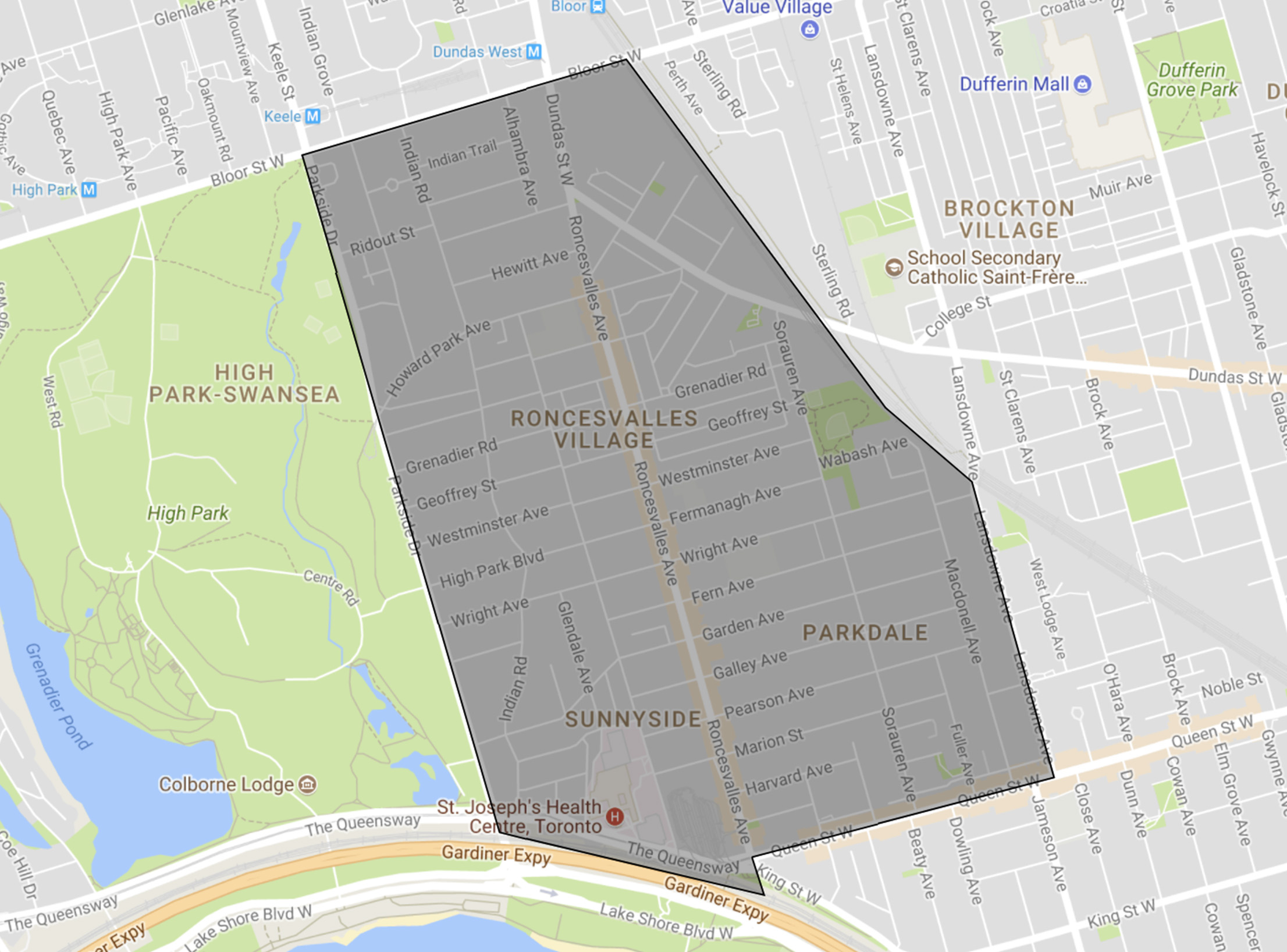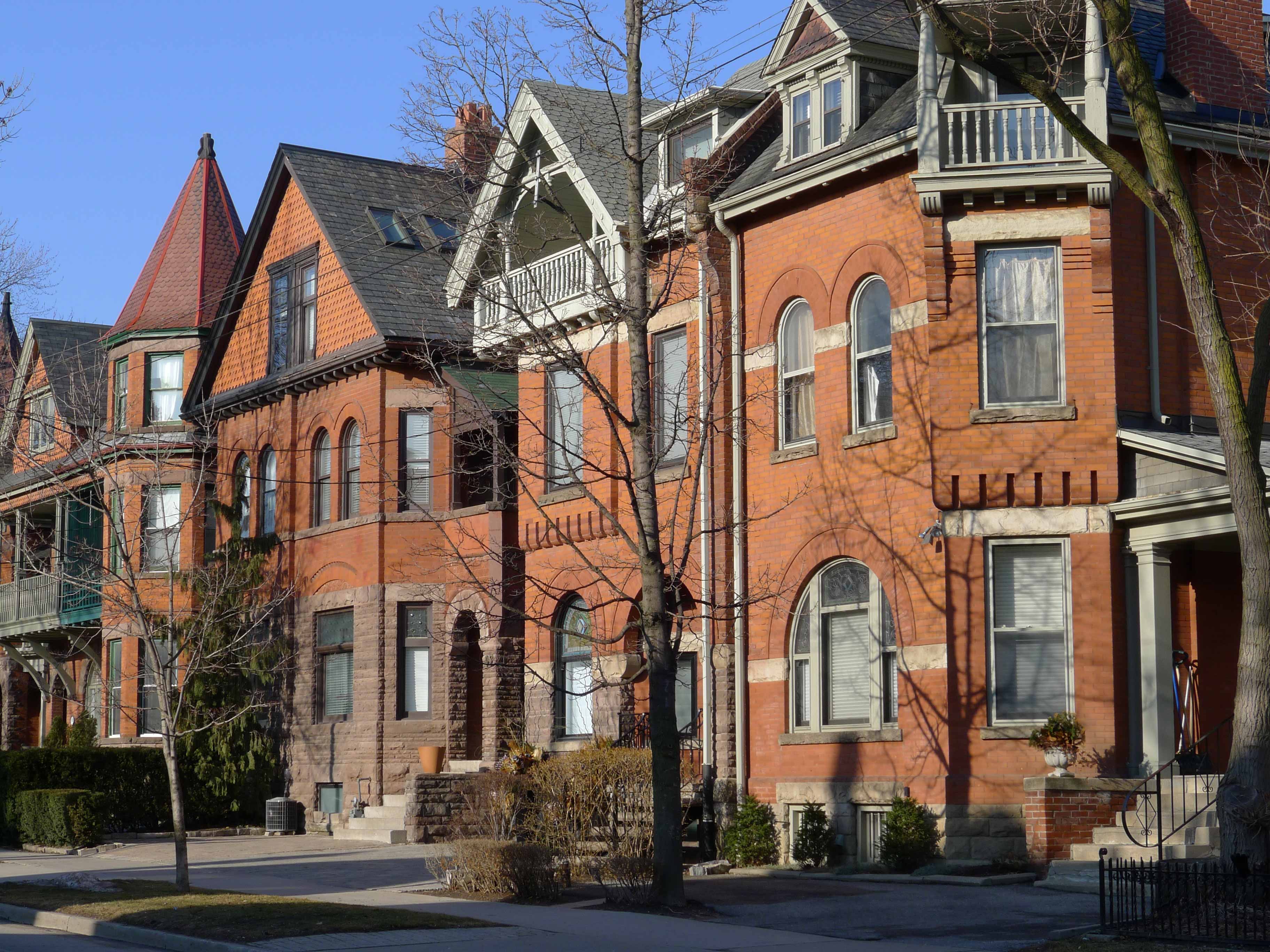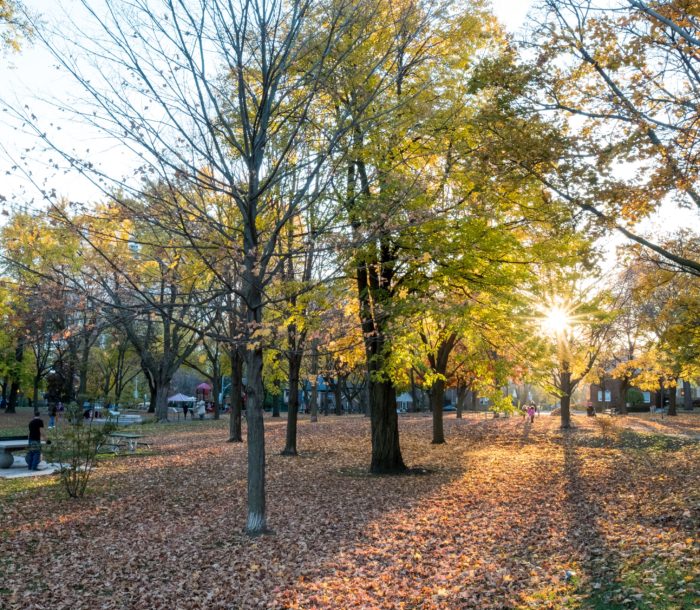Neighbourhood
Roncesvalles is bound by Bloor West (North) to Queen St. W (South) Parkside Drive (West) to Landsdown (East)
Roncesvalles, often known to locals as “Roncy.” Is still considered the heart of Toronto’s Polish community and locals can enjoy places like Cafe Polonez and The Village Meat Products & Deli. The area has a dynamic family-friendly relaxed ambiance. Along Roncesvalles there are many trendy cafes, bakeries, health food stores, restaurants, and boutique stores. Edging the area is High Park, which is a destination park filled with nature paths for bikers, runners or moms walking pushing strollers, a mini zoo, pond and a restaurant and bar. There are also two smaller parks: Sorauren Park and G. Williams Park that the area can enjoy.
The Parkdale community centre and the Keele community centre offer many recreational activities for children and adults. The Roncesvalles Village Polish Festival is held each fall, closing Roncesvalles Avenue to vehicular traffic and is a day the community looks forward to enjoying amusement rides, craft, clothing and food stands and outdoor musical entertainment, including polka music.
History
The first settler in Roncesvalles was Colonel Walter O’Hara, dating back to 1850. He was a soldier in the British army before immigrating to Canada. During that time, he was captured by the French in the Roncesvalles Gorge in northern Spain, which is where the name of the area originated. The streets in this neighbourhood are named after O’Hara’s family members; Geoffrey, Constence, Marion and Sorauren. The area got streetcar access in the early 1900’s which helped to grow the area as well as create employment opportunities. At the turn of the century the first school was built in the neighbourhood, the Old Howard Park school on Boustead Avenue.
Although a number of Victorian homes had already been built extending north from Parkdale, the neighbourhood was largely built from 1900 until the First World War with almost all houses built in the ‘foursquare’ style. Originally these homes were designed for the middle class while wealthier homes were found in Parkdale. Also at this time, the first four Carnegie Libraries were opened in Toronto. Apart from the Central Library all (three) libraries were identical, one of them being the High Park branch on Roncesvalles Avenue. In the later years of its development, Roncesvalles began to attract some wealthier families and many impressive homes were built from 1910-1930 on High Park Boulevard and High Park Gardens.
Real Estate
The neighborhood is predominantly residential, with a commercial strip the full length of Roncesvalles, composed predominantly of small businesses, churches and services. Several of the buildings along Sorauren Avenue have been converted into loft-style condominiums which are sought after. At one time a large TTC bus garage was located along Sorauren Avenue; this property has been converted into Sorauren Park. Two other old industrial buildings along Wabash are owned by the City of Toronto, and are slated for a future community centre project. One of the buildings currently serves as a clubhouse for the Park.
Schools
Howard Junior Public School | Grades JK-6
Garden Avenue Junior Public School | Grades JK-6
Fern Avenue Junior and Senior Public School | JK-8 (French – Grade 6)
Parkdale Collegiate Institute Grade 9-12
St. Vincent de Paul Catholic Elementary School | JK – 6
Humberside | Grades 9-12
Parkdale | Grades 9-12
Western Tech | Grades 9-12
Bishop Morrocco / Thomas Merton | Catholic Grades 9-12
École Secondaire Toronto Ouest | French Grades 9-12
Transportation
Roncesvalles is serviced by Dundas West and Keele subway stations to the north at Bloor Street. There are also many streetcars which provide frequent service and the Queensway bus provides service along Parkside Avenue from Keele station. Streetcar service on Roncesvalles, Queen, King, and Dundas connect you to the downtown subway stations or to stations on the Bloor-Danforth line.





